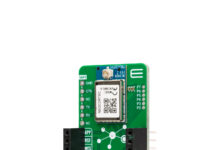When a part or tool goes missing, a production line has to adjust and work around the disruption. If this happens multiple times each day, it quickly eats into fabrication times and revenues. Delays also drive up costs for warehousing, production, labor, and more.
It’s a big problem, with a tiny solution. Asset tracking, whether it’s parts, people, or equipment, is incorporating Internet of Things (IoT) advancements with thin tags that can be automatically tracked throughout the factory or yard.
IoT Bluetooth Low-Energy (BLE) devices are joining passive RFID in the asset management and tracking space. It’s a new way to track that comes with tradeoffs in battery life and cost against improved functionality. Each excels in distinct ways, and we’ll be considering a few reasons that asset monitoring IoT platforms can be beneficial for today’s manufacturers.
Optimizing Usage and Space
Active based real-time location systems don’t require assets to pass through specific gates that are common in passive RFID deployments. You deploy forklifts, walkie stackers, side loaders, and other equipment where they’re needed. If a tracking system doesn’t cover the whole facility, location data for important equipment can be missed, since the most efficient usage or immediate need doesn’t always involve running past a fixed location so that an old RFID gate could track them.
IoT asset tracking systems can provide continuous indoor and outdoor mapping using whatever is available, such as GPS, Wi-Fi, and cellular networks. IoT sensors support a long read-range and can even include multiple sensors and data options, allowing you to track physical location, condition (e.g. temperature), as well as overall usage.
Automatically keeping tabs on the hours of service for each device can help you ensure they get the scheduled maintenance they need. Protect your people and equipment while meeting its warranty requirements too.
At the same time, you’re able to design factory floors to best fit production. Standard IoT-based systems can easily adapt to virtually any layout. You can prioritize your floor for efficiency and adjust as needed without having to remove fixed, expensive readers.
Read More & Download Whitepaper


















